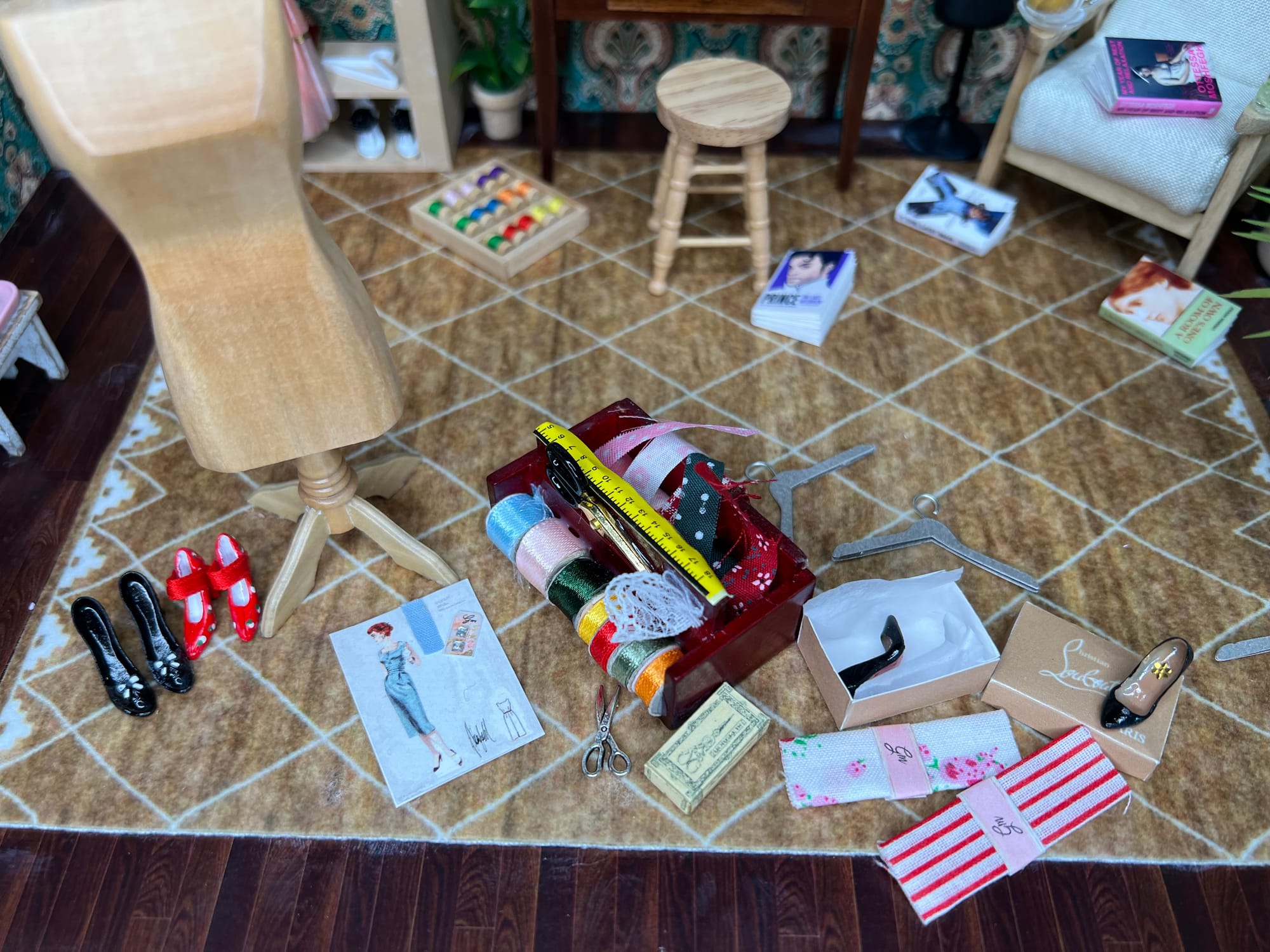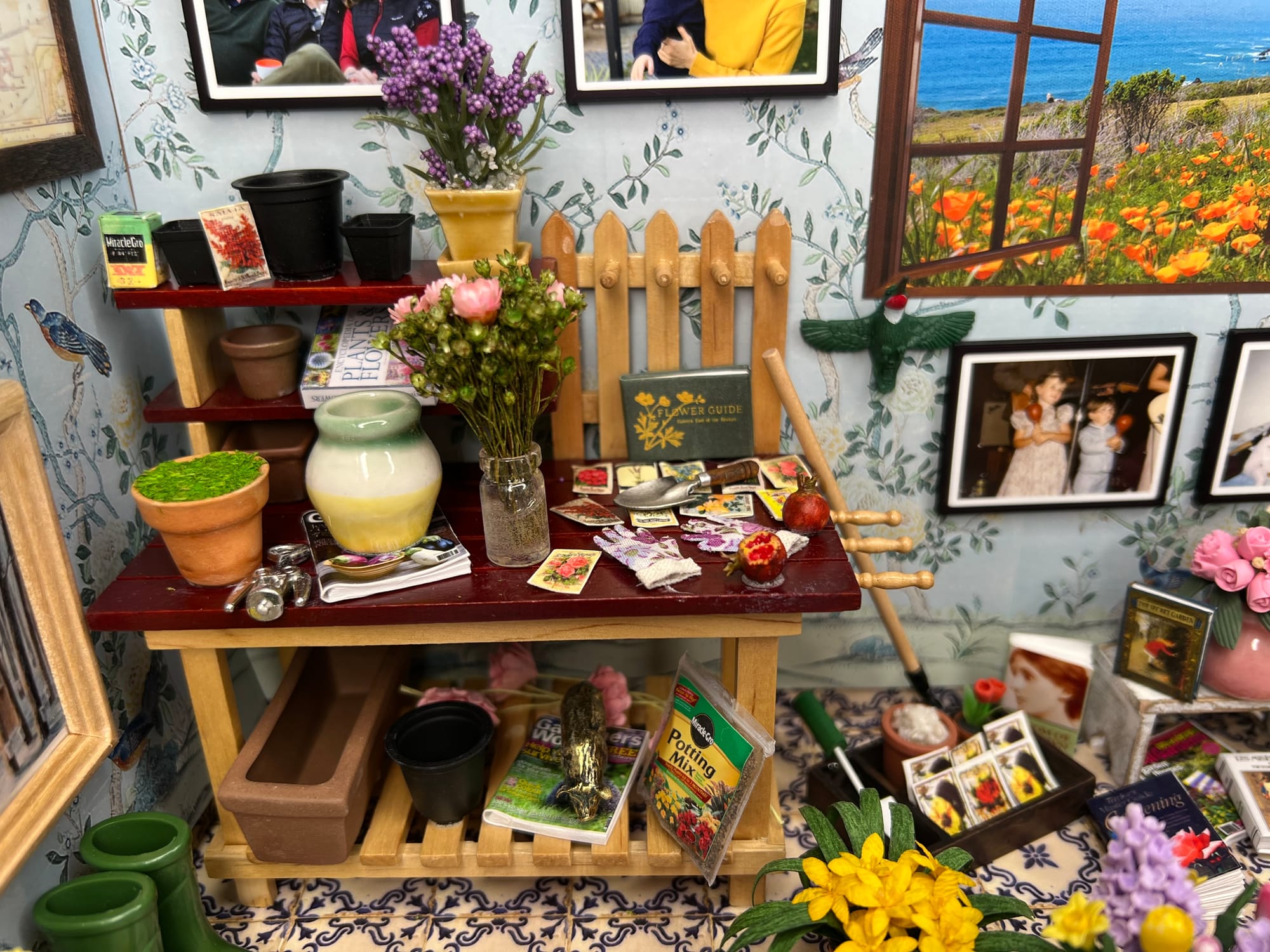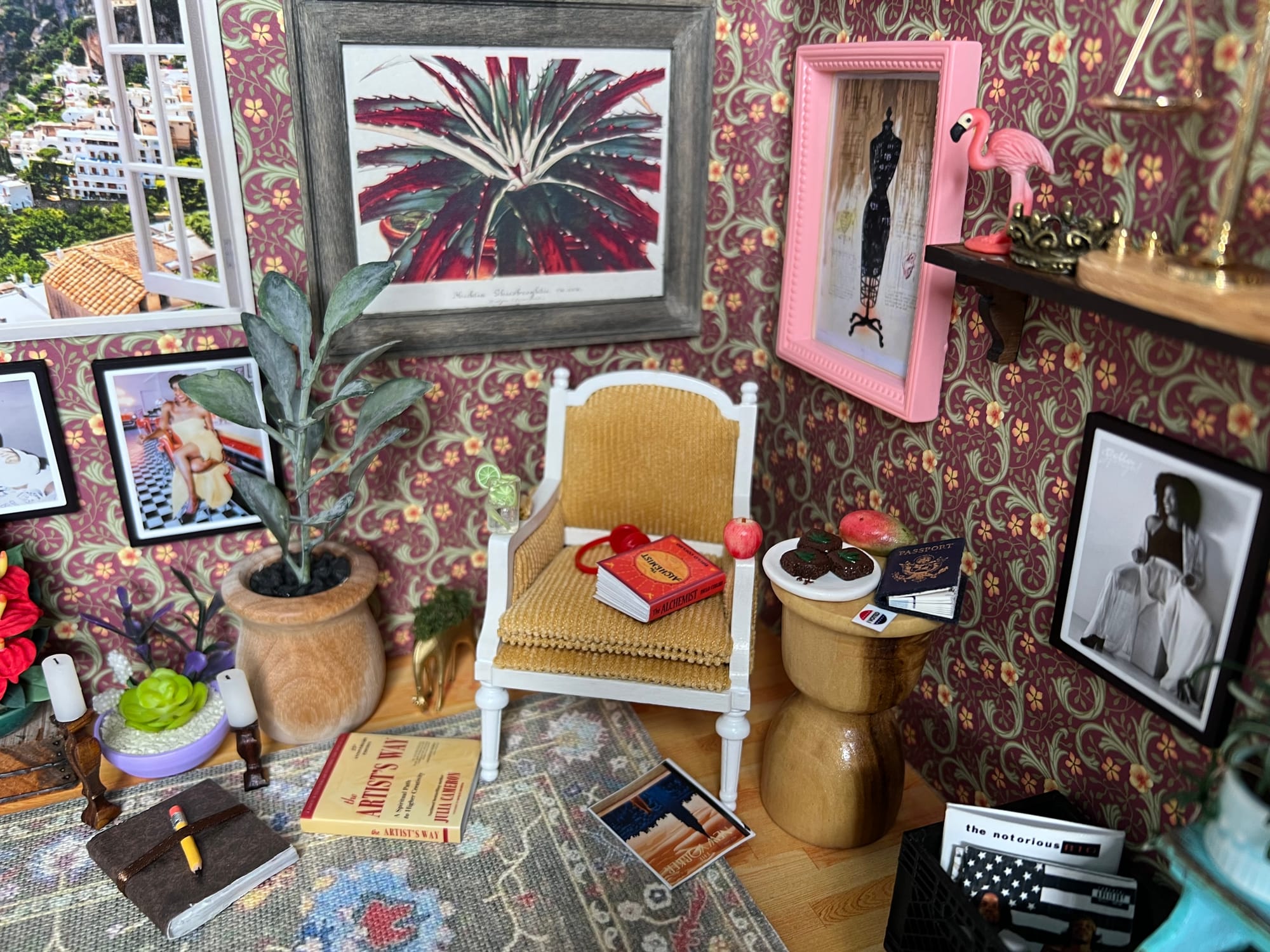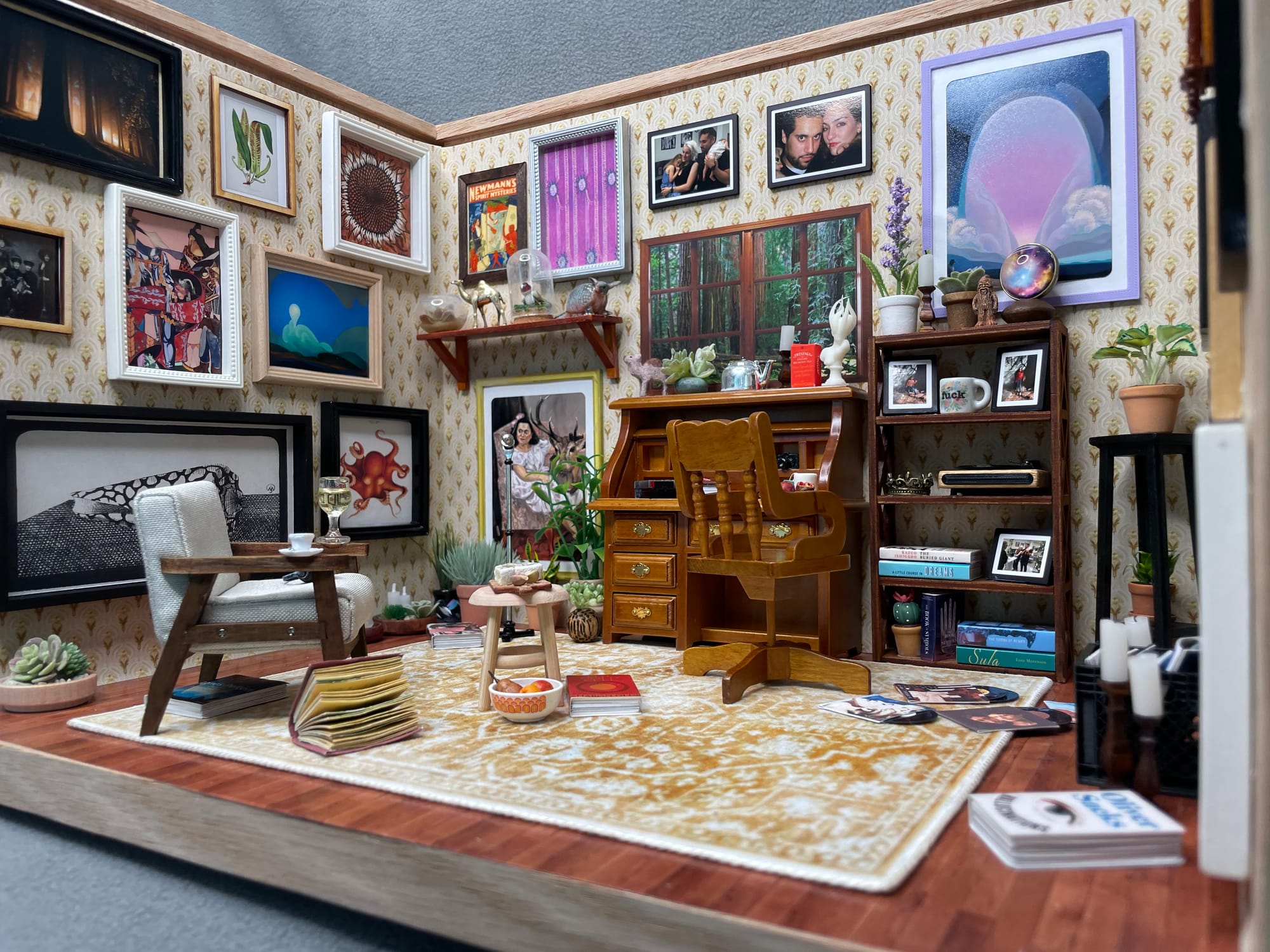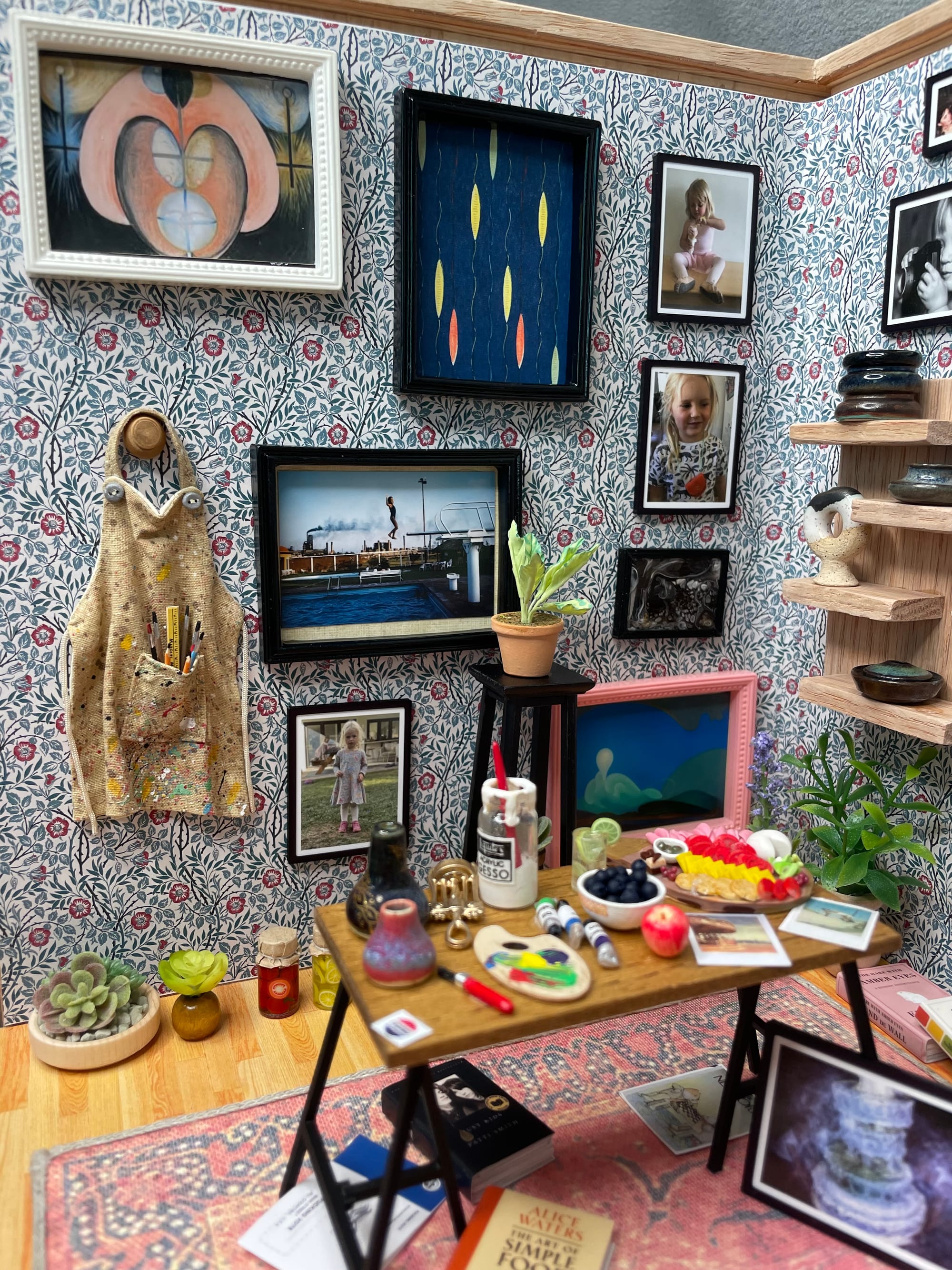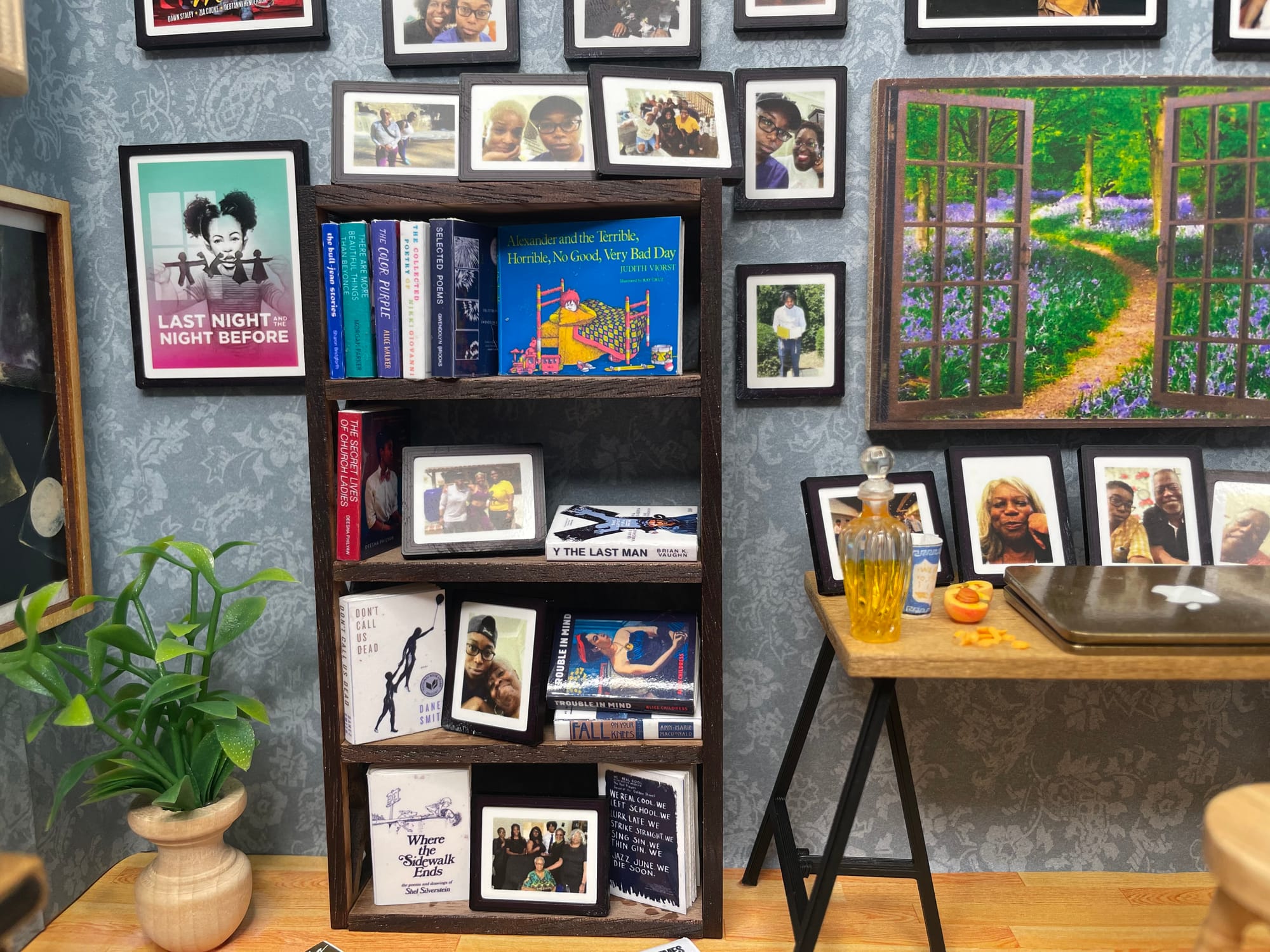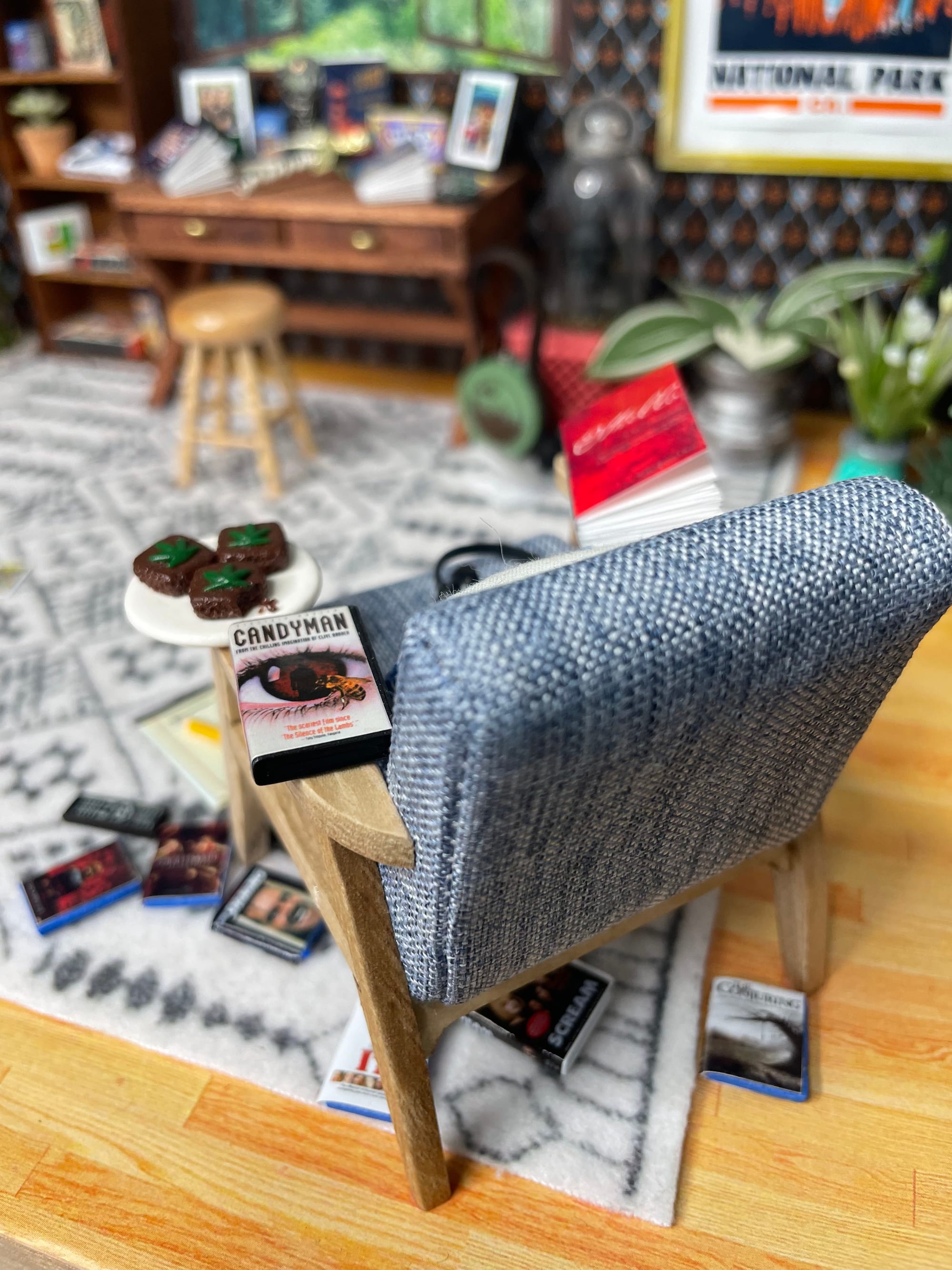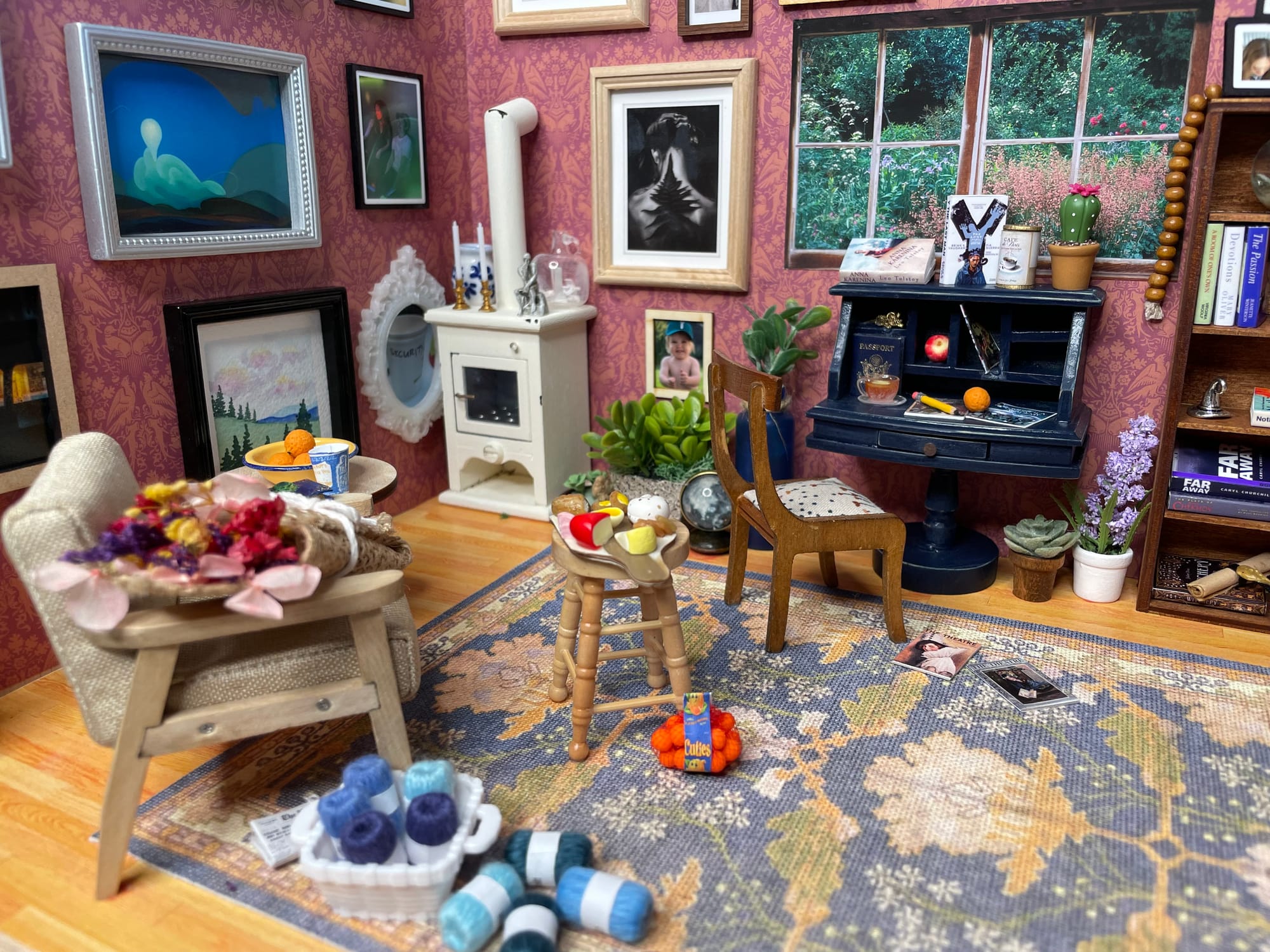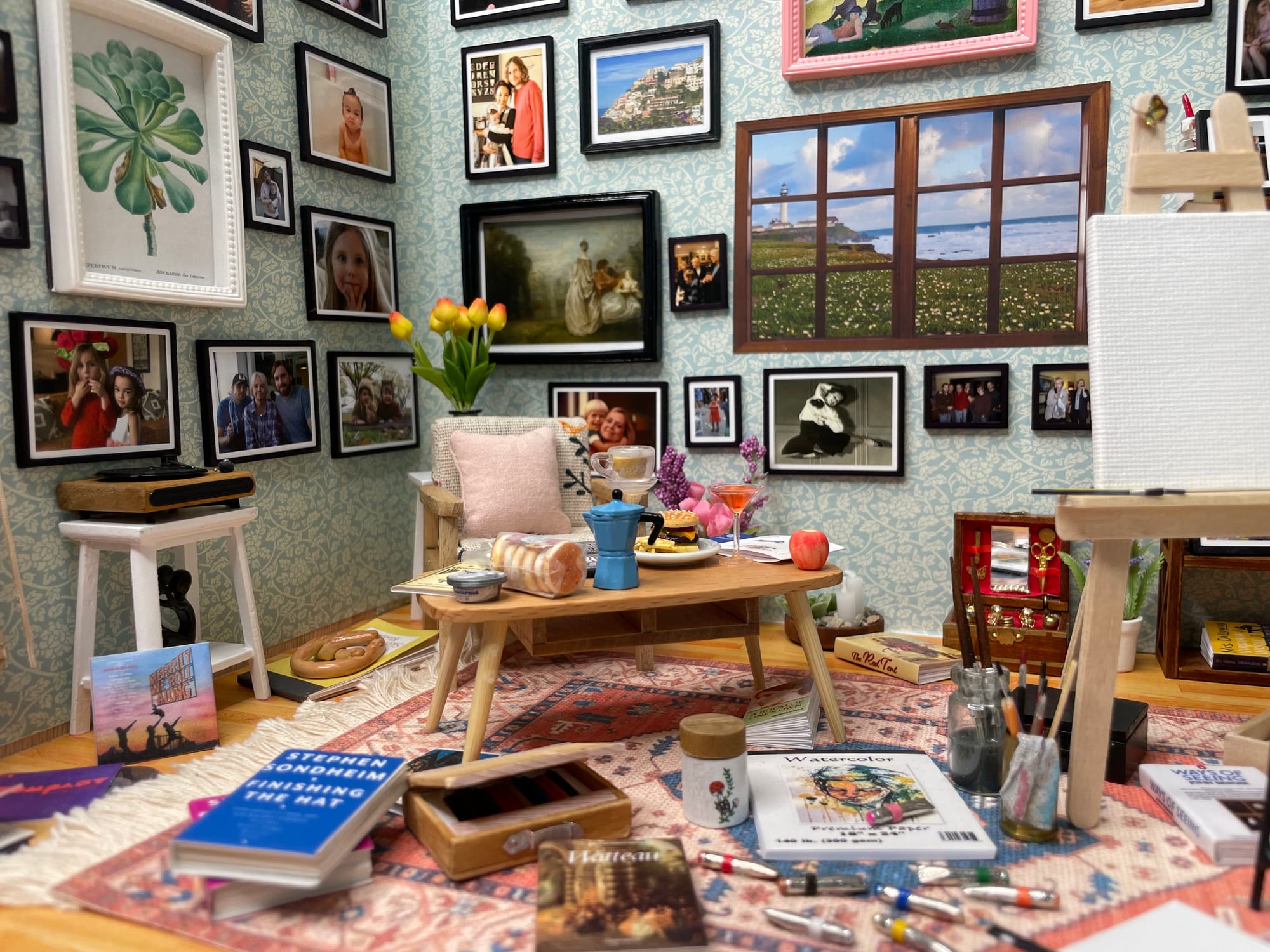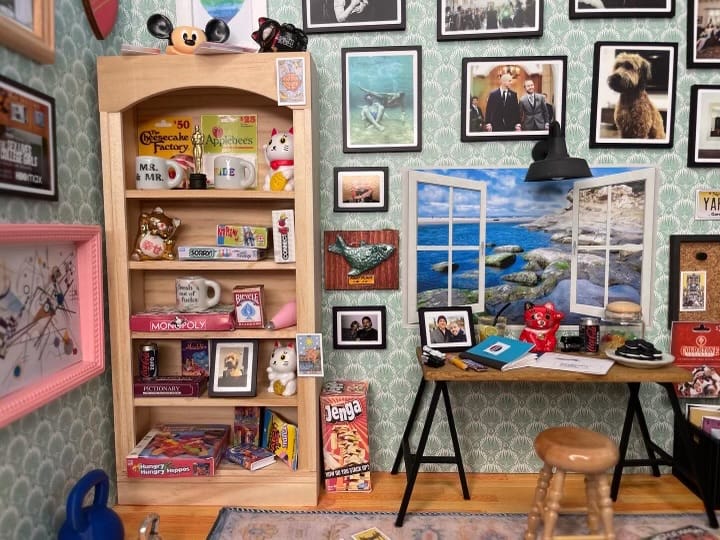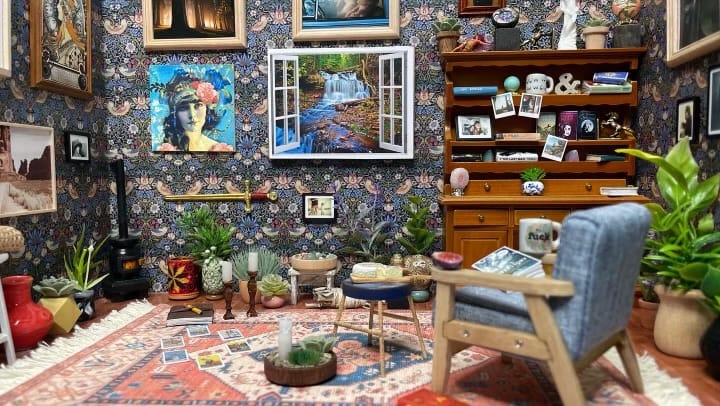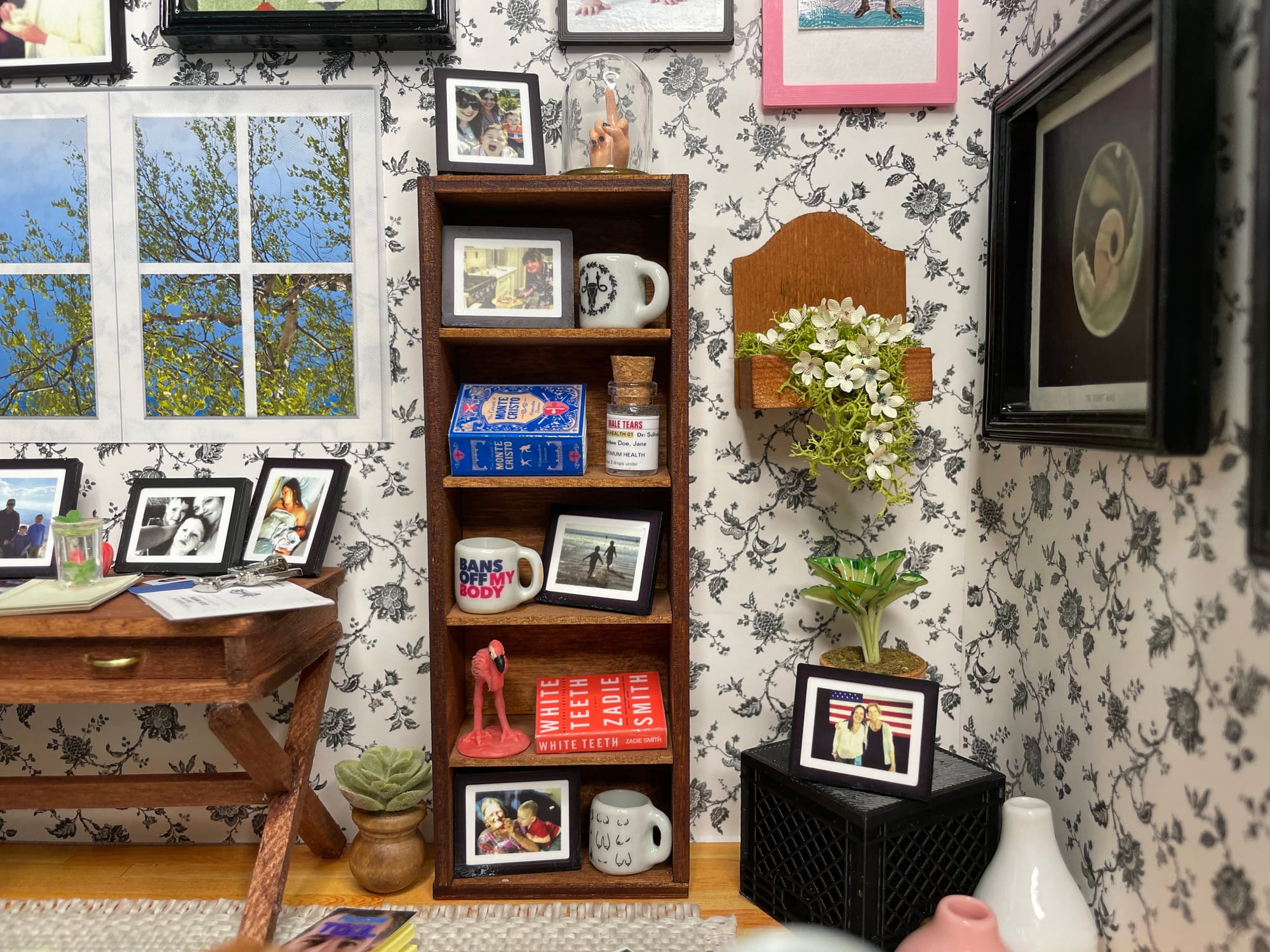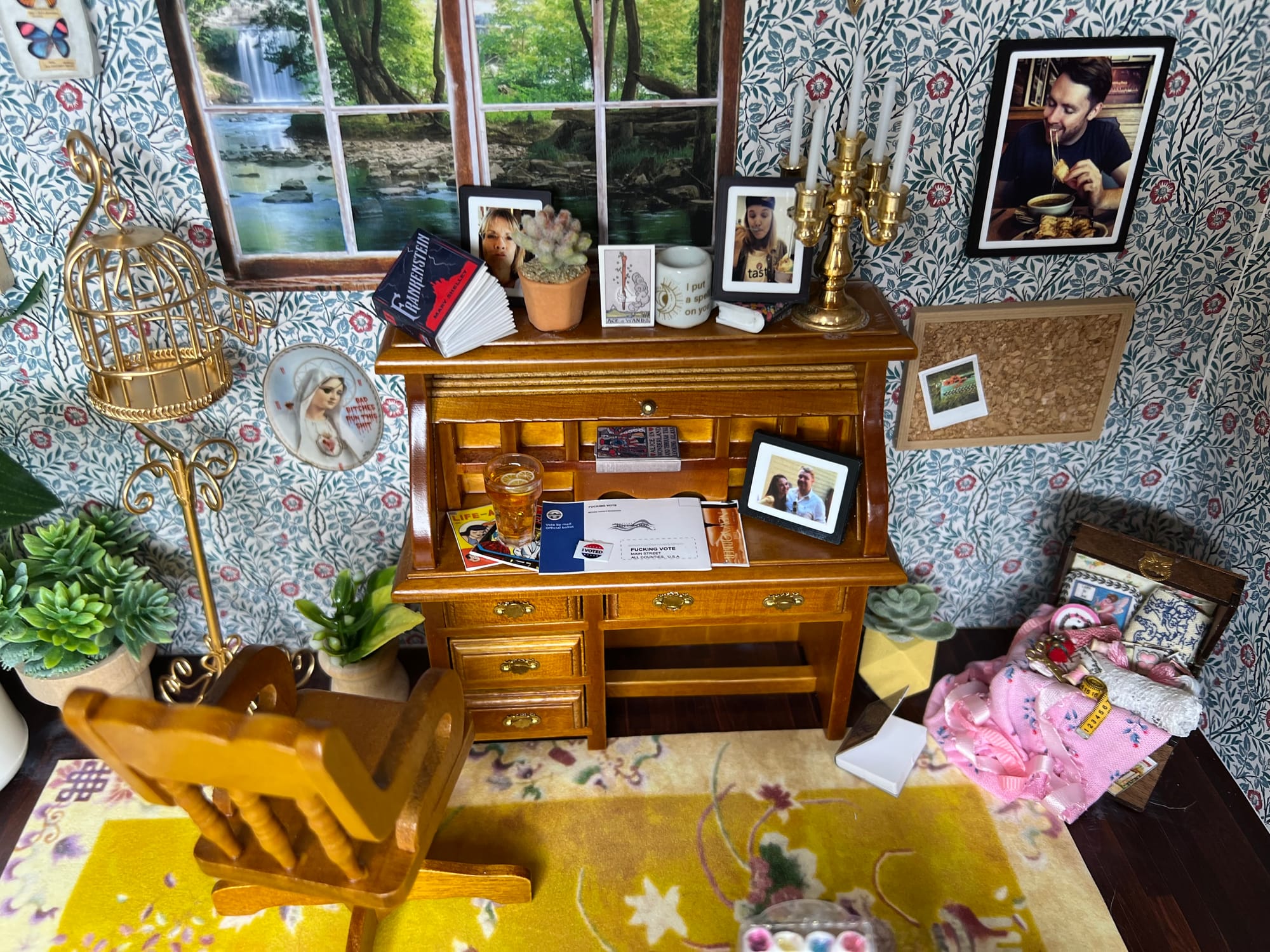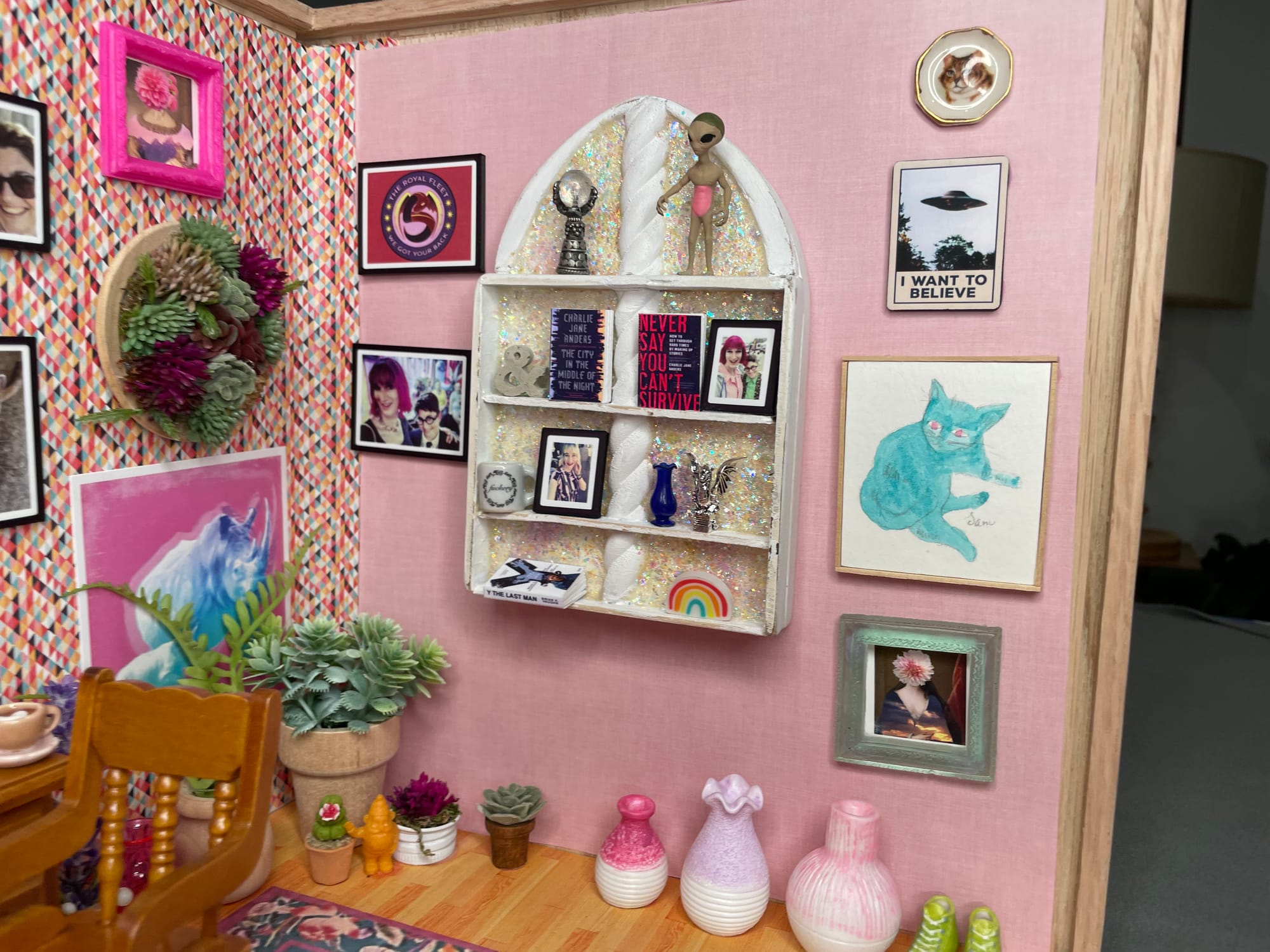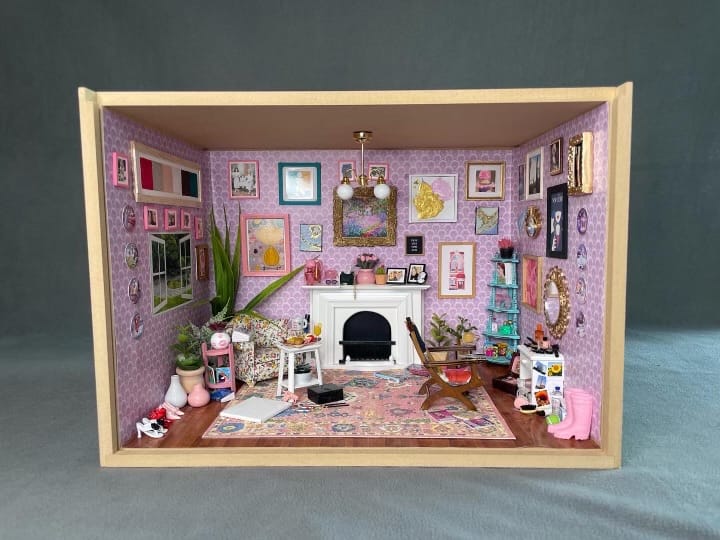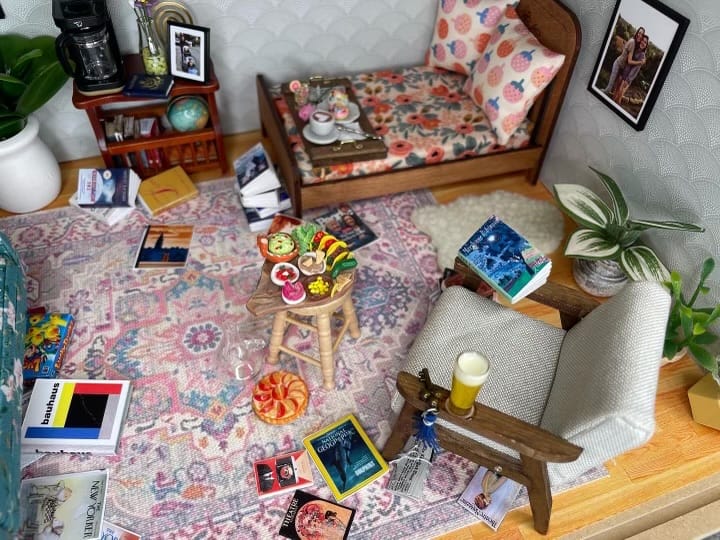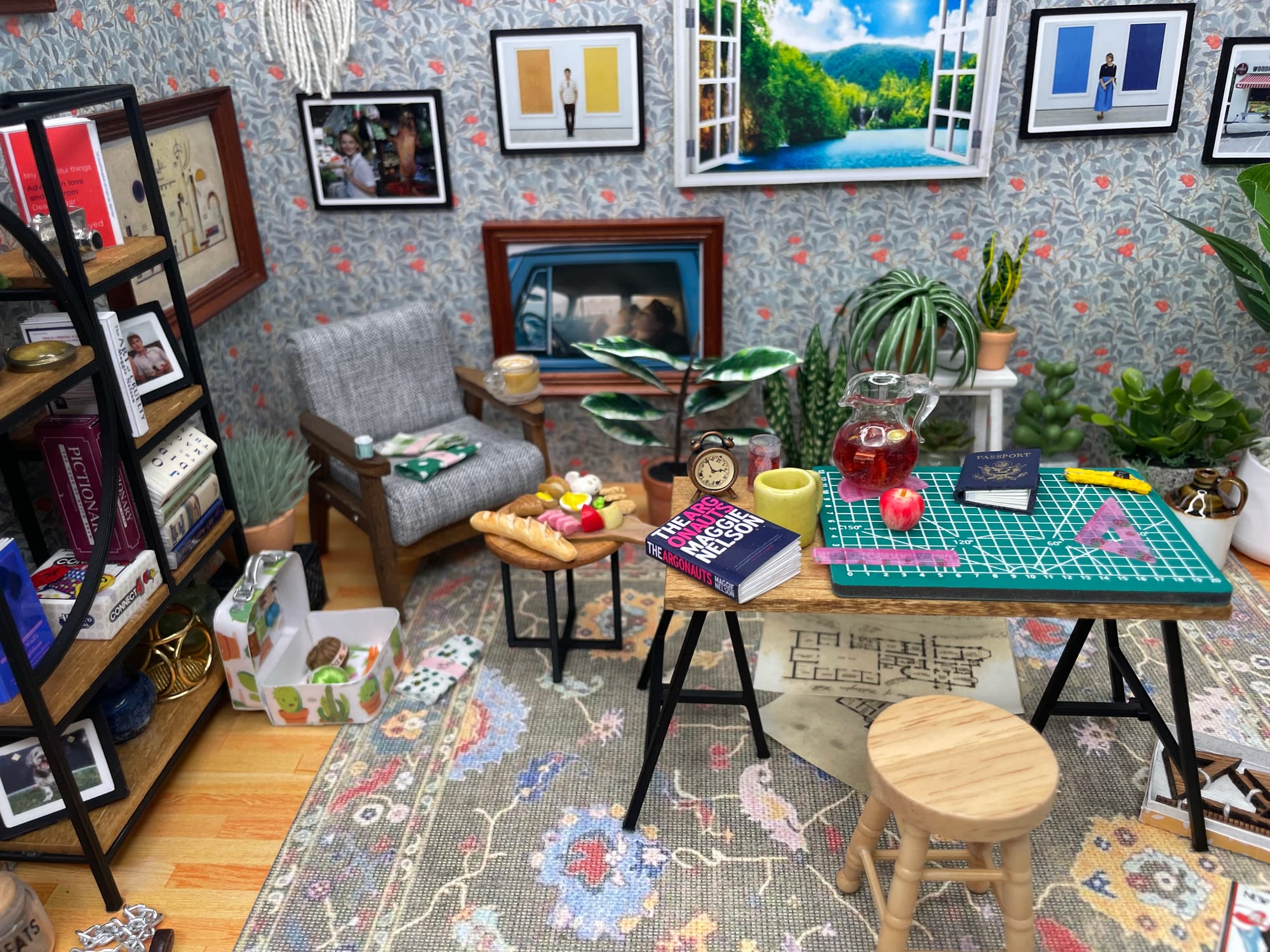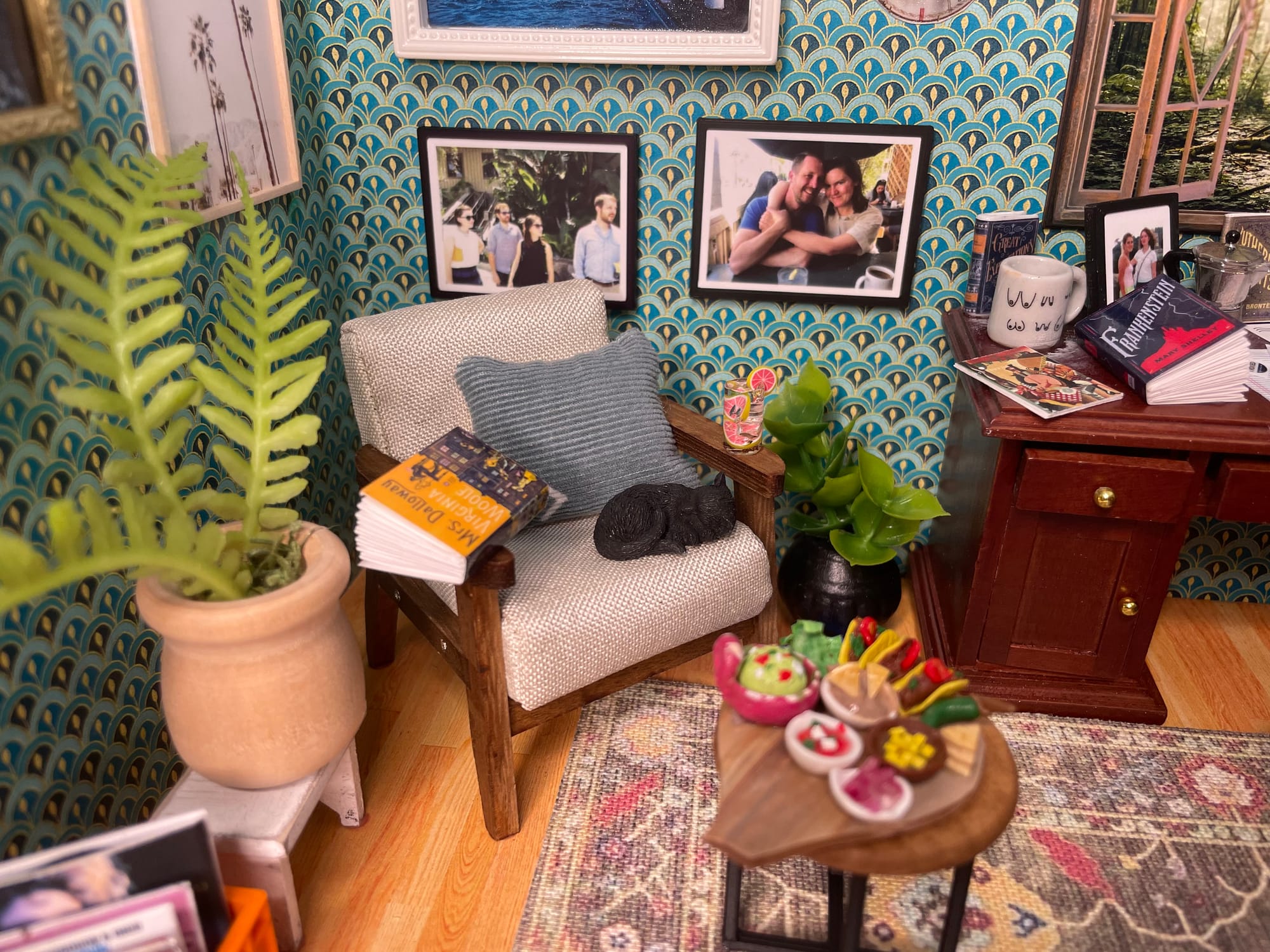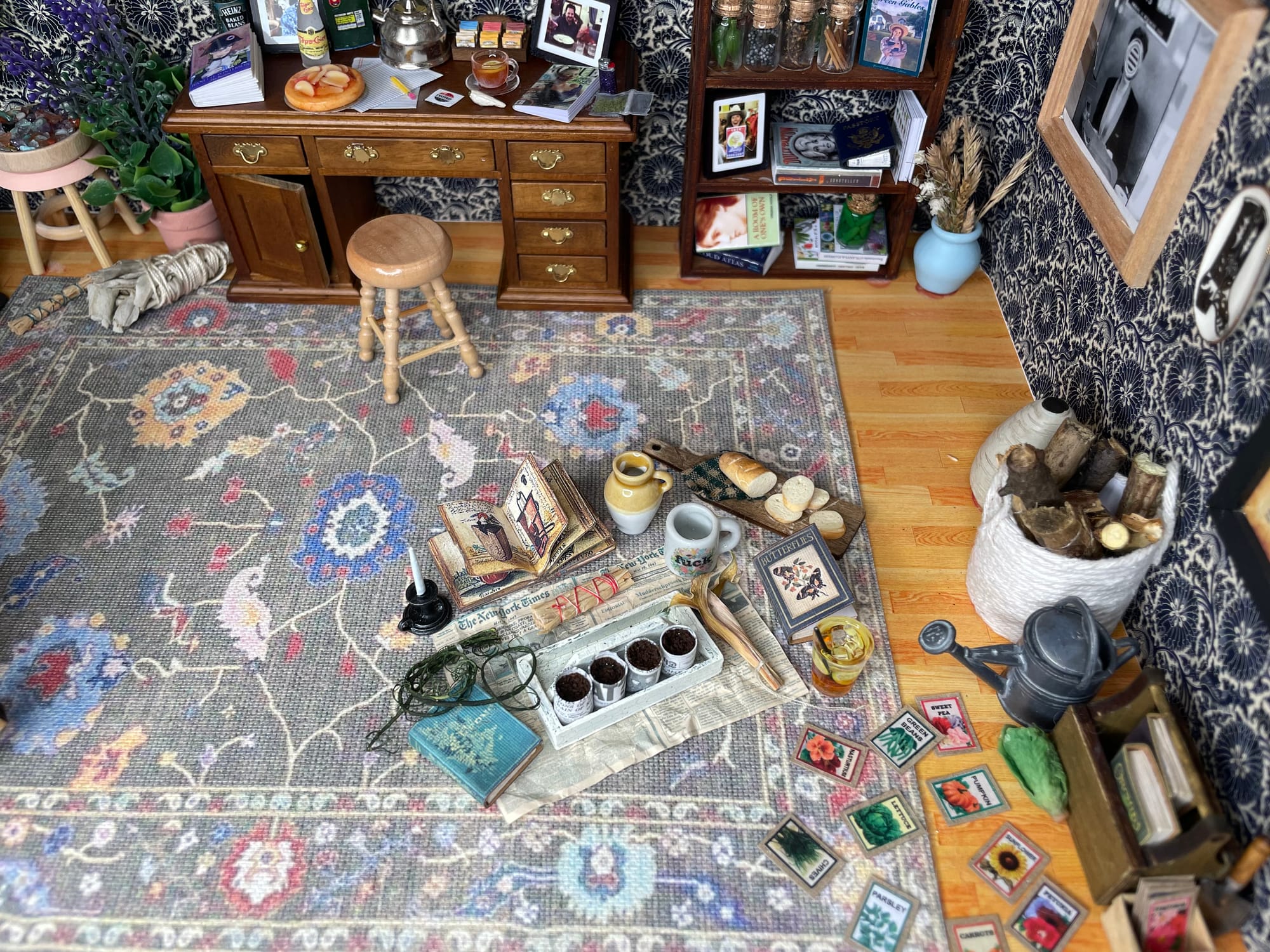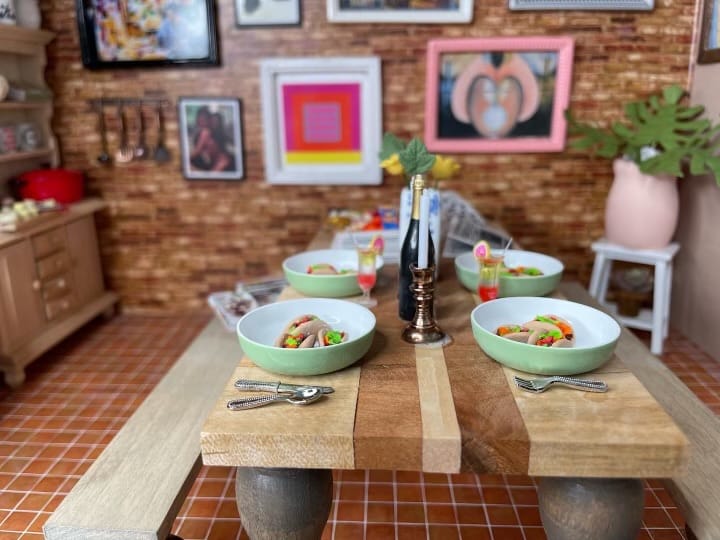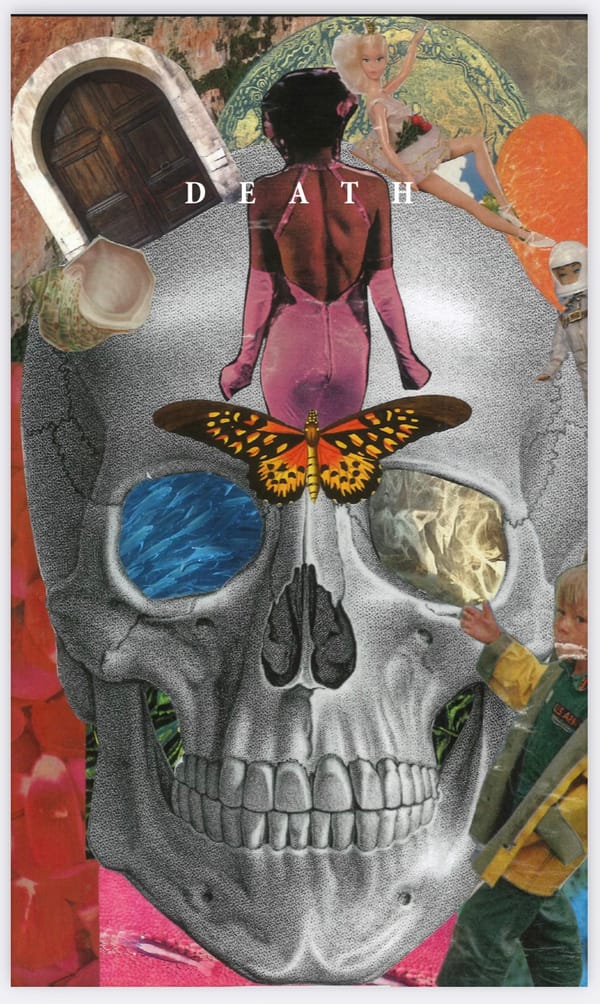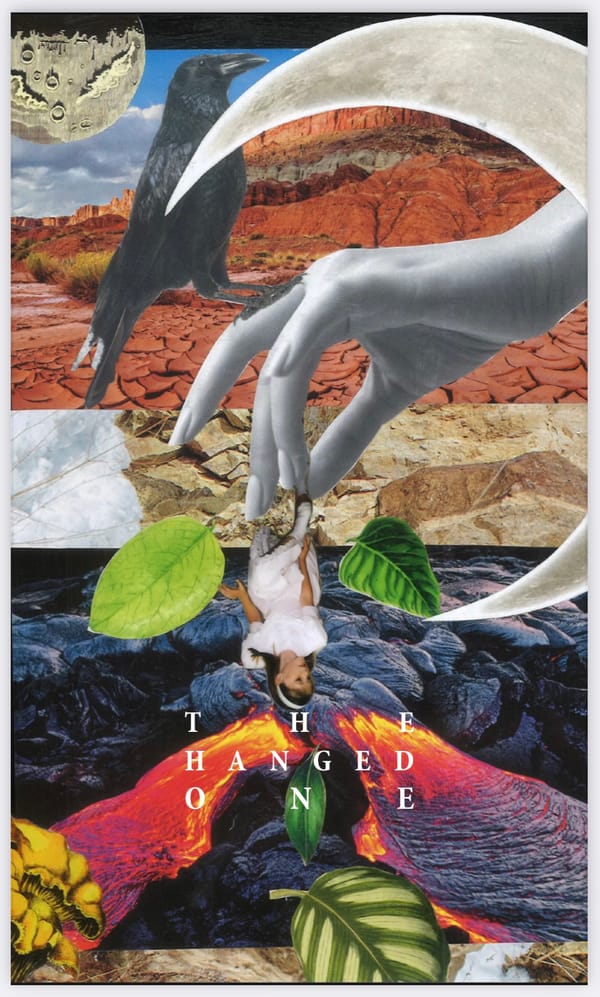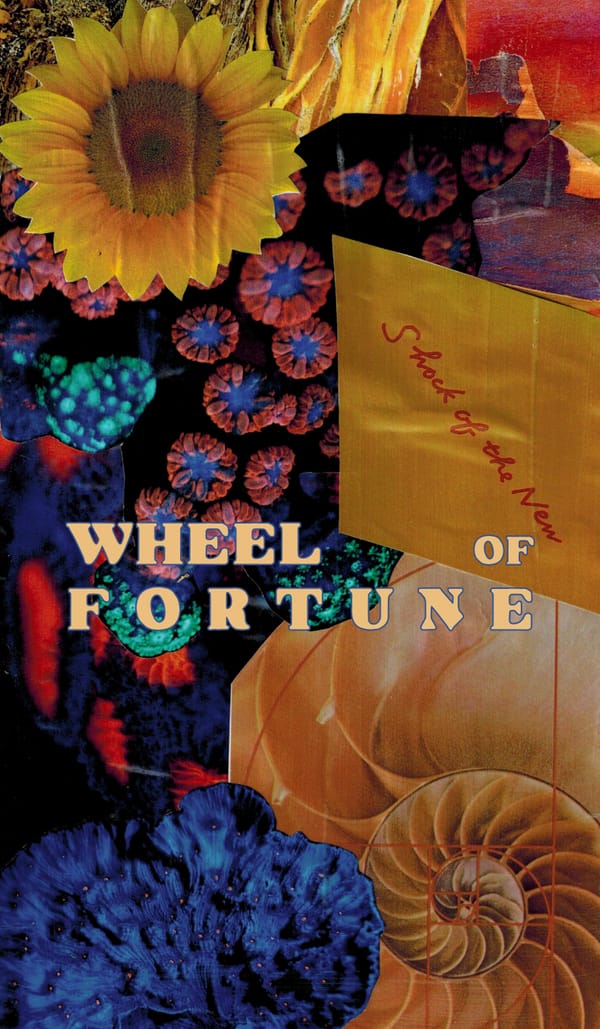The Hermit
I was yearning for solitude, for some time to process and move through the terror and joy and grief of the past few years. And because my brain processes through creation, but my writer’s mind refused the call, I had to build something else.
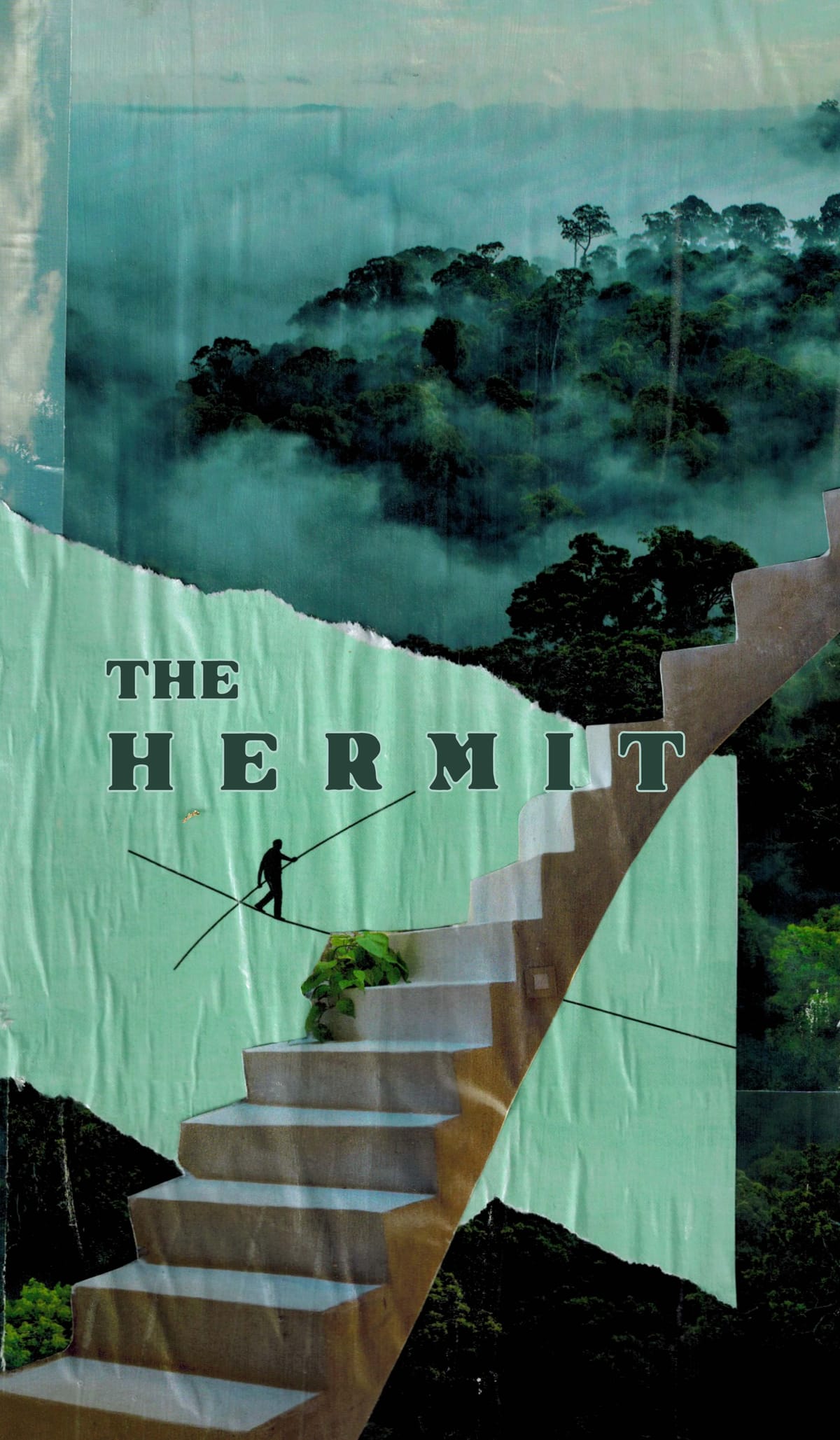
“The Hermit is both seeker and guide. He searches for solitude, taking the lonely path. He asks for intentional isolation for solitary meditation. He wanders without fear of the dark and treacherous trail through the mountains of inner discovery. He holds his lantern up to the blackness of his subconscious, revealing what was once hidden. He demands reflection, space for growth, the clearing of a cluttered mind. He requires all action to be authentic and aligned to one’s own truth. His lamp casts only a small circle of light, indicating that both moving forward and sitting still are demanded in the search for higher self. He asks for seclusion and contemplation. He encourages pilgrimage, retreat, a journey to sacred lands. He is guided by his own North Star — the voice within. He stops. He listens. He knows that his destination always is ultimately himself.”
- Library of Esoterica Tarot written and edited by Jessica Hundley
THE HERMIT PLAYLIST
(I'm putting it up top in the hopes that you will listen to it – thank you so much to all of the people who suggested songs!)
On December 15, 2021, I opened a brand new forest green spiral bound notebook and wrote “Quarter 1 of 2022.” Beneath it I wrote a list of suggested titles for this period of time: “The Winter of My Discontent, My Blue Period, The Winter of What The Fuck, Three Months of Grief, The Death of a Former Self, The Seedlings of New Me, Actual Feeling of My Feelings Time” and my personal favorite: “The Fuckity Fuck Train to Sad Town.”
I was, as the kids say, in my feelings. Also, yes, this is how I write in my journal. I'm a drama queen and I can't be stopped.
In September of 2021, my television show, Y THE LAST MAN (based on the brilliant graphic novel by Brian K Vaughan and Pia Guerra), premiered on FX on Hulu, starring a stacked cast of incredible actors. It was the result of years of work, nearly a year of it in Covid-plagued Toronto. The entire endeavor was a labor of love and an exercise in collaboration and creativity. We were forced, by ever-changing Covid precautions in the region, to shoot, for example, a violent storming of The White House with eight stunt actors. Safety rules changed overnight, and our collaborative and inventive team pivoted again and again. It was exhilarating and difficult, and we made something I was profoundly proud of. By the end of October 2021, the show was canceled, not enough people had watched it, which was something I might have seen coming (though I didn’t, not at all) — the show was about a global pandemic that wiped out half the world’s population. A year into Covid, that was apparently not what audiences were looking for in their downtime.
I was gobsmacked. Leveled. I’ve always prided myself on being pragmatic, unaffected by the whims of this business, but I had let my guard down. The show had become personal. The cast and crew were not co-workers or employees, but family. We had lived through something terrifying together, and not only had we survived, we had made something beautiful. I was proud of us. And so, I was devastated. It took months for me to understand that the feeling I was experiencing was grief.
Sometime in this horrible winter, “The Winter of What The Fuck,” I got a package in the mail from my friend, Amber Tamblyn (who also starred in my now canceled show and was in her own period of grieving for our project). She had sent me the book Wintering: The Power of Rest and Retreat In Difficult Times by Katherine May. I read it immediately, this contemplative little book about checking out for a season and going within. Amber sensed that this was something I needed, and she was right, as evidenced by what I had written in my notebook in that week between Christmas and New Years, but I wasn’t exactly sure how, or what I would find when I got there.
I remember the feeling of envy I had reading Wintering. I was jealous of May’s ability to turn herself into a character, to put her life in context. We are much kinder to characters than we are to ourselves. We see the things characters do as part of a larger story — the things we read about them, the plot points that befall them — these are all variations on larger themes, interesting nuggets that tell us who they are. We forgive characters, because we understand narrative arc. We give them the benefit of a larger story, and we trust that each moment will give way to another. Characters are on a path to redemption, jostling through a story toward an ending, while we are just flailing around in the dark of the present with no promise of context.
I longed to be able to step outside myself (which is what I had been trying and failing to do by drinking). I quit drinking on January 16, 2021, right at the beginning of The Winter of My Discontent. In that dark time, I longed to be able to see the indignities of depression — the boob sweat, the fuzzy tongue, the greasy hair, the acidic belly of coffee upon coffee upon no food, the black and white cookie at 3pm eaten on an entirely empty stomach — romanticized by cleverly placed words on a page.
I come from a family of mythologists, experts at crafting a narrative, lovers of a good punch up, a sprinkling of dramatic flair. There are many stories that have been told so many times, I could recite them, like fairytales, no longer a thing that happened to me but a lesson imparted by a different version of me from long ago. Writing has always been a way to contextualize or give meaning to the darkest thoughts I have, to bring them into the light where they can’t hurt me.
But during the Fuckity Fuck Train to Sad Town Winter, I couldn’t write a single word. Every time I sat down to write, my brain would attack. My inner critic, who has always been an annoying little fuck, had suddenly blossomed into a full-fledged Godzilla, capable of destroying any confidence I ever had. Every thought I had, every word I wrote, my critic would rail against, reminding me that I thought Y The Last Man would last five seasons, that every idea I had was not commercial, that no one wanted what I was selling, and my best writing years were behind me.
Those conditions were not especially conducive to creativity. Amber had sent me a book about wintering and though, in theory, I was going to give myself some time to process and grieve, my perfectionist brain reduced “wintering” to “weekending” — I frequently had the thought, give yourself a few days but then get back to it.
My body and brain refused. In retrospect, I can see how hard I was working at everything I had neglected besides writing. Quitting drinking is no joke, friends, and that alone was a full time job in those early days. I was also reintroducing my body to the idea of moving — every day, I would force myself to march up a mountain, pausing every fifteen or so feet as my lungs burned in my chest, and sweat dripped onto my nose, fogging up my sunglasses.
At my office, I would stare at a blank page and berate myself. Finally I couldn’t take any more of the crippling self doubt. I decided, fine, I will winter. I will do my best to winter without giving myself too hard a time about it. I will grieve the loss of my creative brainchild, and I will not try to write anything.
Instead, I developed a strange and obsessive little hobby. I started making tiny rooms. All told, in 2021, I made around thirty 1:12 scale rooms to give to my friends. I had never been interested in miniatures before, and my obsession and hyper fixation on them has since abated (thank you ADHD).
In some ways, the tiny rooms were a strange impulse. We had all just spent an entire year and change caged up in our homes, why did anyone need an even smaller confined space? But another part of me recognized a need for solitude, in a time when we had been isolated but also breathing down each other’s necks. In my own quarantined home, my husband spent some of his time working on a bean bag chair that he put in the shower, just to have a little peace and quiet. My body was tired, my brain was burnt out, my heart was grieving. And I was yearning for solitude, for some time to process and move through the terror and joy and grief of the past few years. And because my brain processes through creation, but my writer’s mind refused the call, I had to build something else.
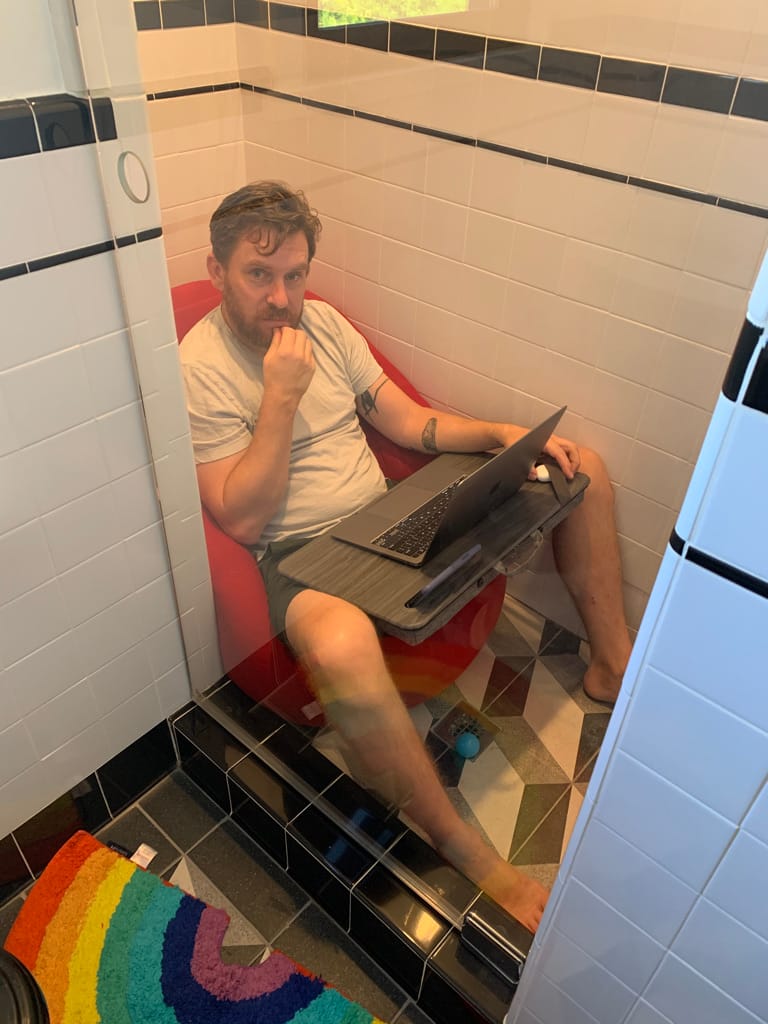
I began by amassing tiny objects. I’d troll Etsy where I established relationships with a few miniature creators. One woman, Constance, was in her sixties, living in Florida, and she made tiny 1:12 scale books. Each tiny room had an intended recipient, complete with all of their favorite things. Constance and I would write to each other back and forth, me ordering a tiny copy of Caryl Churchhill’s Far Away or Toni Morrison’s Jazz, Constance telling me little bits and pieces about her life as she fulfilled my orders.
For each room, I chose a window, a view to the outside — sometimes these windows looked out on the tops of trees, others overlooked the ocean, or were located on the cliffs of Big Sur. I curated tiny bookshelves, and miniaturized Hilma Af Klint paintings to adorn the walls of the safe spaces I built for my friends. Eventually I made my own tiny room, a concrete home for my imagination, a place to picture myself retreating to, a place where nothing was expected of me and no one was knocking on the door. On my tiny desk, I put a pomegranate to remind me of my mother, the only person I know who will undertake the painstaking process of freeing the seeds of a pomegranate, and a bowlful of jelly beans. The self I was building a tiny room for allows herself simple pleasures like jelly beans without guilt.
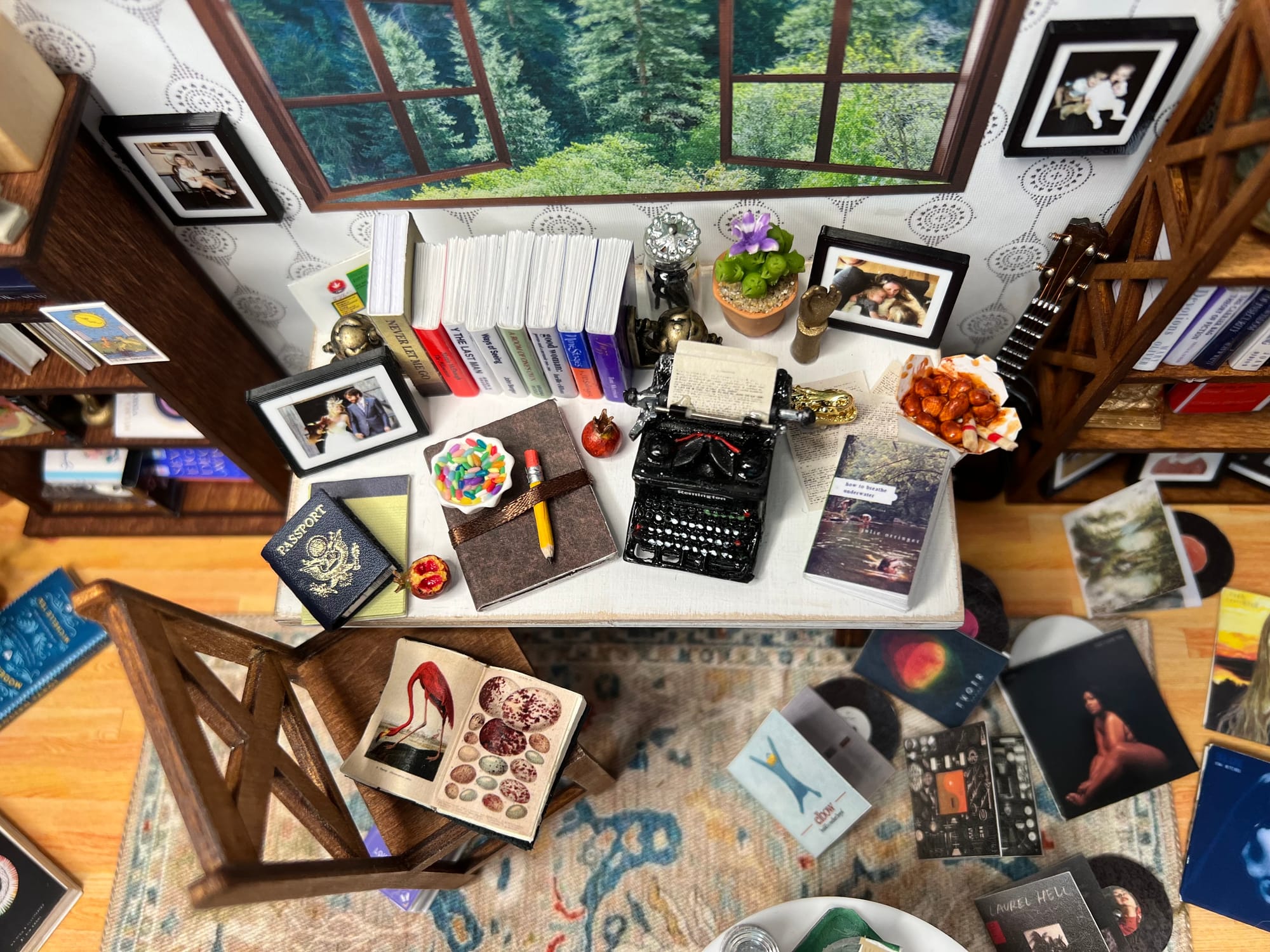
Every picture on the wall of my tiny room, every tiny object and its placement was purposeful and curated. Every day I’d come home with pieces of skin missing from my fingers from run-ins with Gorilla Glue. Every morning, I’d return to my office eager to begin my winter work — figuring out the placement for each tiny chair, each remarkably small picture frame, the mini tarot cards.
I needed this practice during this season (the Fuckity Fuck Train to Sad Town). Each day I got to exercise my creative mind in a process that allowed me to get out of my own head. Every day I spent a few hours imagining where my friend might like to place her tiny camera or record player, which armchair my friend might like to curl up in to read a book. As gifts, the tiny rooms were a way to tell the people I loved that I saw them, that in spite of how hard I’d been working and how much I had missed of their lives over the last year, I had thought of them often, and I still knew and loved them.
When I made my own tiny room, it was a little like the process of writing, an opportunity to step outside the agony of living as myself, and see myself instead from afar, as a character. Where would Eli like her chair to be? (Facing the window) What should be out Eli’s window? (Trees, so many big beautiful trees) Which records did Eli scatter on the floor? (Joni Mitchell "Blue," Mistki "Laurel Hell," Bo Burnham "Inside" among others) Would Eli like a messy coffee table or a gleaming surface? (messy, full of life) Which tarot cards had the Tiny Room Eli just picked and placed on her altar? (The Fool, the Magician, Justice, Temperance, and The Hermit).
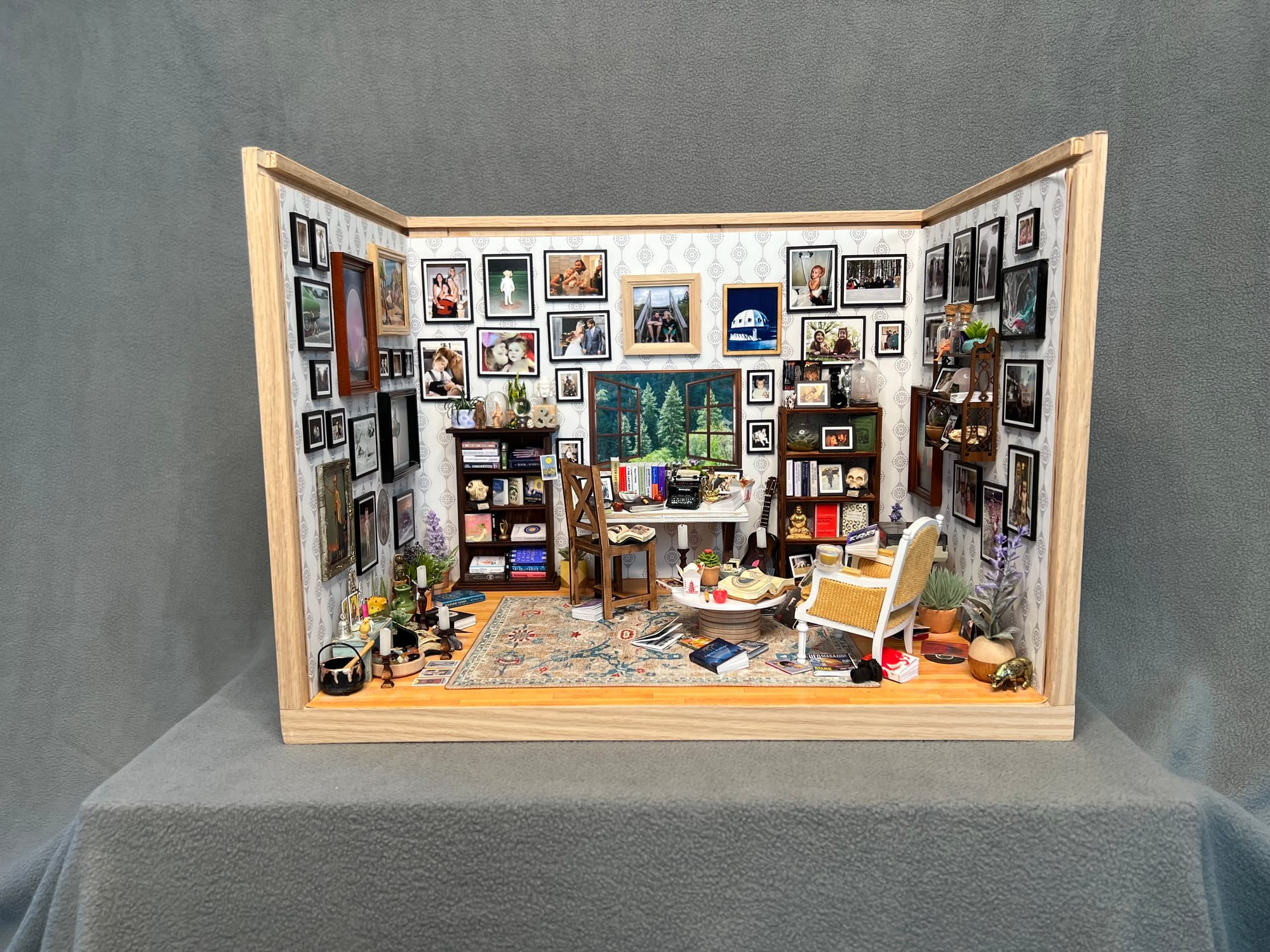
For the winter I went inward and became The Hermit, spending time with my own thoughts, breaking my life down into its smallest component parts, trying to remember the littlest things that brought me joy. And it worked. Every day, I woke up and went to work on a thing that wasn’t my job, and that brought me joy. At the same time, ideas started percolating again, bubbling up, repeating insistently when they were good enough to remember. And soon, I started writing again.
As I curated the contents of bookshelves, using tweezers to place small delicious fruits on the arms of small, comfortable chairs, I nursed my broken heart. I learned to love writing again. All it took was heartbreak and disappointment so enormous I thought it would swallow me whole. I rebuilt my brain piece by tiny piece, in 1:12 scale. Where would Colleen like to eat her tiny cannoli? What would Olivia like to see out her window? Where would Emily put her bicycle? Does Taylor need a tiny umbrella by the door?
I returned myself to myself imagining the tiny hearts of other people, hearts I love. In a time when my own life felt unmanageable, I became a ventriloquist, speaking for other people for a few hours until my hands remembered loving invention and my mind began to dream in characters again.
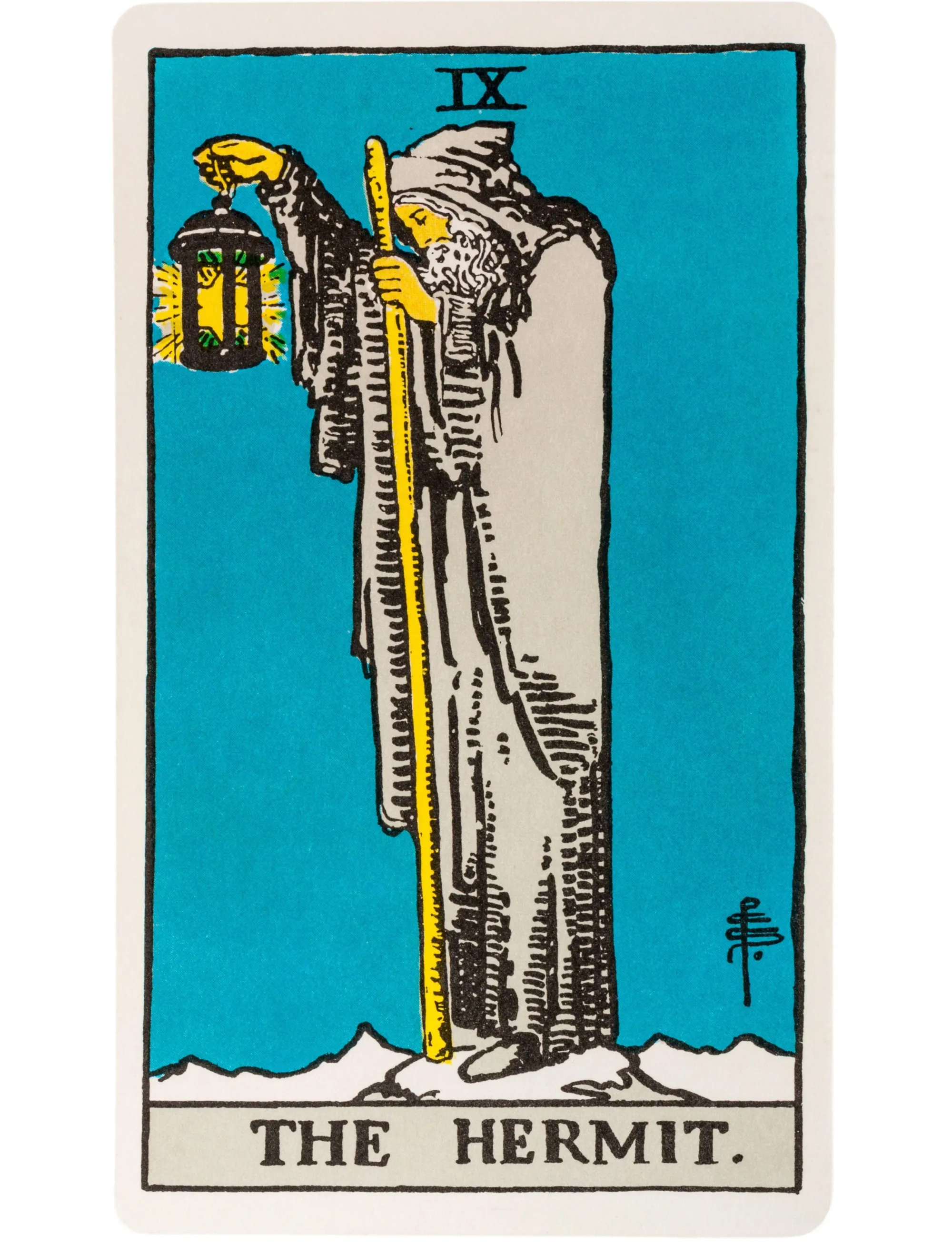

Recommendations!
Wintering: The Power of Rest and Retreat in Difficult Times by Katherine May. This book is really lovely. I hope you like it.
18 Tiny Deaths: The Untold Story of Frances Glessner Lee and The Invention of Modern Forensics by Bruce Goldfarb. A true story about Frances Glessner Lee, who created modern forensics with elaborate miniature crime scenes. A true crime miniature gory queen.
The Nutshell Studies of Unexplained Death essays and photography by Corrine May Botz. Incredible photos of Frances Glessner Lee's miniature crime scenes.
These are only a handful of photos from only a few of my tiny rooms. There are many many many more:
